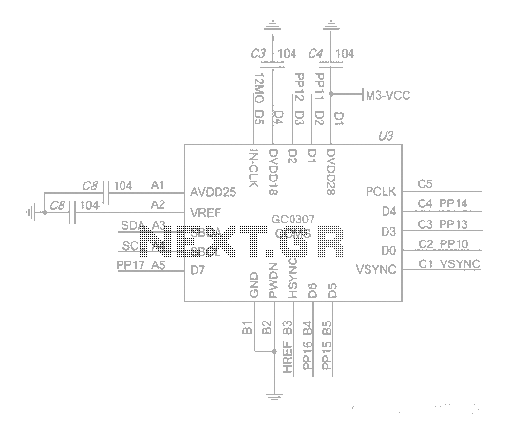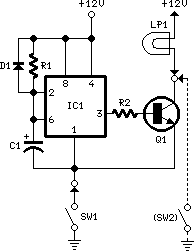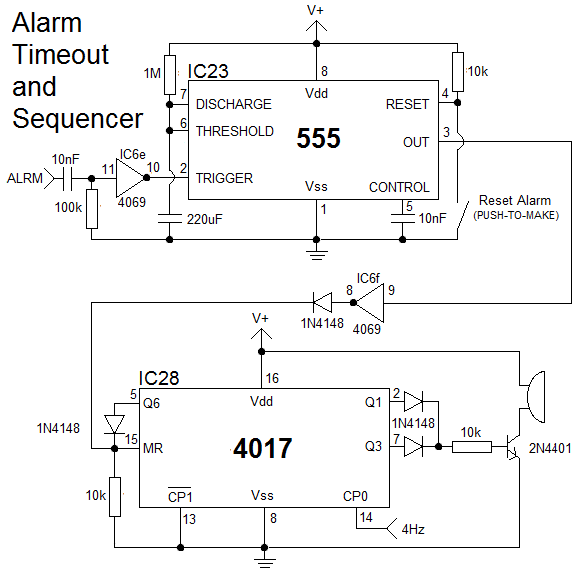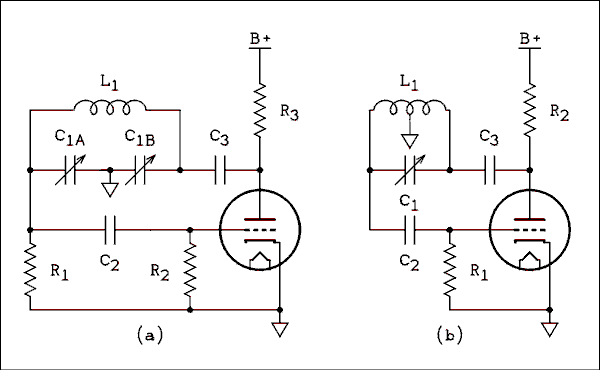
10 To 1Hz Timebase Circuit
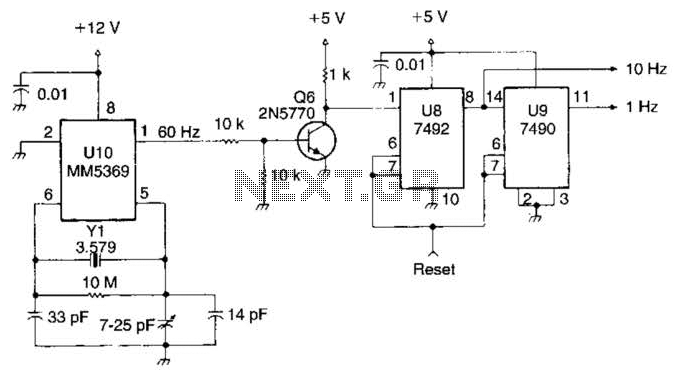
This system utilizes an MM5369 integrated circuit (IC) to generate a 60 Hz signal from a television burst crystal operating at 3.579 MHz. The components F8 and V9 produce 10 Hz and 1 Hz signals derived from the 60 Hz output. Additionally, Y1 can be any parallel-mode 3.579 MHz crystal.
The MM5369 is a versatile timing generator IC that is commonly used in applications requiring precise frequency generation. In this circuit, the MM5369 is configured to accept a 3.579 MHz input from a parallel-mode crystal, which is known for its stability and accuracy in generating timing signals. The crystal oscillator circuit is essential for ensuring that the frequency remains stable over varying temperature and voltage conditions.
The output from the MM5369 is a 60 Hz square wave signal, which serves as a reliable clock source for further frequency division. The subsequent components, F8 and V9, function as frequency dividers. F8 reduces the 60 Hz signal to a 10 Hz signal, while V9 further divides the 10 Hz signal down to a 1 Hz output. These divisions are typically accomplished using flip-flops or counters, which take advantage of the square wave characteristics of the input signal.
The choice of the 3.579 MHz crystal (Y1) is critical, as it directly influences the precision of the derived signals. This frequency is commonly used in television applications, making the MM5369 an ideal choice for synchronization tasks in video equipment or related electronic systems. The design ensures that the output frequencies are stable and suitable for applications such as timing circuits, clock generation, and other digital signal processing tasks.
Overall, this circuit exemplifies a straightforward yet effective method for generating low-frequency signals from a high-frequency crystal oscillator, leveraging the capabilities of the MM5369 IC and the inherent stability of the selected crystal. This system uses an MM5369 IC to derive a 60-Hz signal from a TV burst crystal (3579 MHz). F8 and V9 producc a 10-Hz and 1-Hz signal from this 60-Hz signal. Y1 can be any parallel-mode 3.579-MHz crystal.
The MM5369 is a versatile timing generator IC that is commonly used in applications requiring precise frequency generation. In this circuit, the MM5369 is configured to accept a 3.579 MHz input from a parallel-mode crystal, which is known for its stability and accuracy in generating timing signals. The crystal oscillator circuit is essential for ensuring that the frequency remains stable over varying temperature and voltage conditions.
The output from the MM5369 is a 60 Hz square wave signal, which serves as a reliable clock source for further frequency division. The subsequent components, F8 and V9, function as frequency dividers. F8 reduces the 60 Hz signal to a 10 Hz signal, while V9 further divides the 10 Hz signal down to a 1 Hz output. These divisions are typically accomplished using flip-flops or counters, which take advantage of the square wave characteristics of the input signal.
The choice of the 3.579 MHz crystal (Y1) is critical, as it directly influences the precision of the derived signals. This frequency is commonly used in television applications, making the MM5369 an ideal choice for synchronization tasks in video equipment or related electronic systems. The design ensures that the output frequencies are stable and suitable for applications such as timing circuits, clock generation, and other digital signal processing tasks.
Overall, this circuit exemplifies a straightforward yet effective method for generating low-frequency signals from a high-frequency crystal oscillator, leveraging the capabilities of the MM5369 IC and the inherent stability of the selected crystal. This system uses an MM5369 IC to derive a 60-Hz signal from a TV burst crystal (3579 MHz). F8 and V9 producc a 10-Hz and 1-Hz signal from this 60-Hz signal. Y1 can be any parallel-mode 3.579-MHz crystal.
